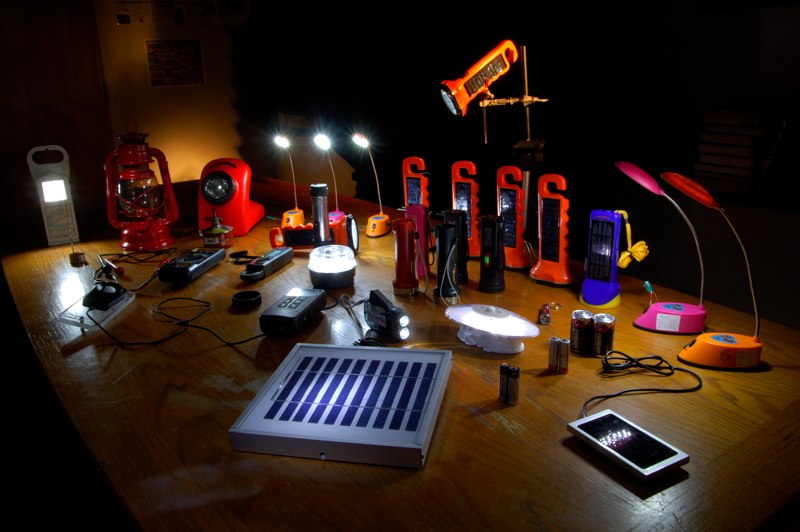As many people who live in impoverished regions around the world start shifting away from fuel-based lighting, like candles, firewood, and kerosene lanterns, to solar-LED systems, this trend comes with more than just environmental benefits. A new study by Lawrence Berkeley National Laboratory (Berkeley Lab) found that it also sparks economic development as well, with the potential to create 2 million new jobs.
Evan Mills, the Berkeley Lab researcher who has been studying lighting in the developing world for over 20 years, conducted the first global analysis of how the transition to solar-LED lighting will impact employment and job creation.
According to Mills, there are about 274 million households worldwide that do not have access to electricity. his study focuses on about 112 million households in Africa and Asia that cannot afford even a mini solar home system, which might power a fan, a few lights, a phone charger, and a small TV. Instead this group can afford only entry-level solar lighting

In countries like Mali, Niger, Sierra Leone, India, Indonesia, and Kenya, individual entrepreneurs sell lanterns, wicks, candles, fuel dippers, and kerosene in small quantities in local markets or on the roadside. This doesn’t exactly create jobs.
Overall, Mills discovered that fuel-based lighting provides 150,000 jobs worldwide. Then he conducted a similar analysis for the emerging solar-LED industry. He found that every 1 million of these lanterns provides an estimated 17,000 jobs. These values include employees of these companies based in developing countries but exclude upstream jobs in primary manufacturing by third parties such as those in factories in China.
According to his data, assuming that there’s a three-year product life and a target of three lanterns per household, this corresponded to about 2 million jobs globally, which more than compensates for the 150,000 jobs that would be lost in the fuel-based lighting market.
Additionally, his research revealed that the quality of jobs would improve, too. This would reduce black market smuggling of kerosene as well as child labor.
There would also be a need for some retraining and education. The new jobs would range from designing and manufacturing products to marketing and distributing them.
Since solar lanterns provide far more and better light, children would also be able study in the evening and businesses could stay open later.

“As long as people are using kerosene lanterns, candles, and other fuels for light, it’s actually reinforcing poverty because they’re spending so much on energy and getting so little in return. So many are stuck in that vicious circle,” said Mills.
Solar-LED lanterns and flashlights are gaining in popularity in the developing world thanks to being “a rugged, affordable, reliable, compact and very manufacturable technology and one that is effectively wireless,” said Mills.
As already mentioned, the switch would also benefit the environment. A study Mills published in 2005 estimated global off-grid lighting energy expenditure at $38 billion per year. That corresponds to CO2 emissions of 190 million metric tons per year— the equivalent of about 30 million typical American cars.
“All of this energy and pollution can potentially be saved with a conversion to solar-LED systems,” he said.
Mills notes that some regions have actually become more impoverished since his 2005 study.


Comments are closed, but trackbacks and pingbacks are open.